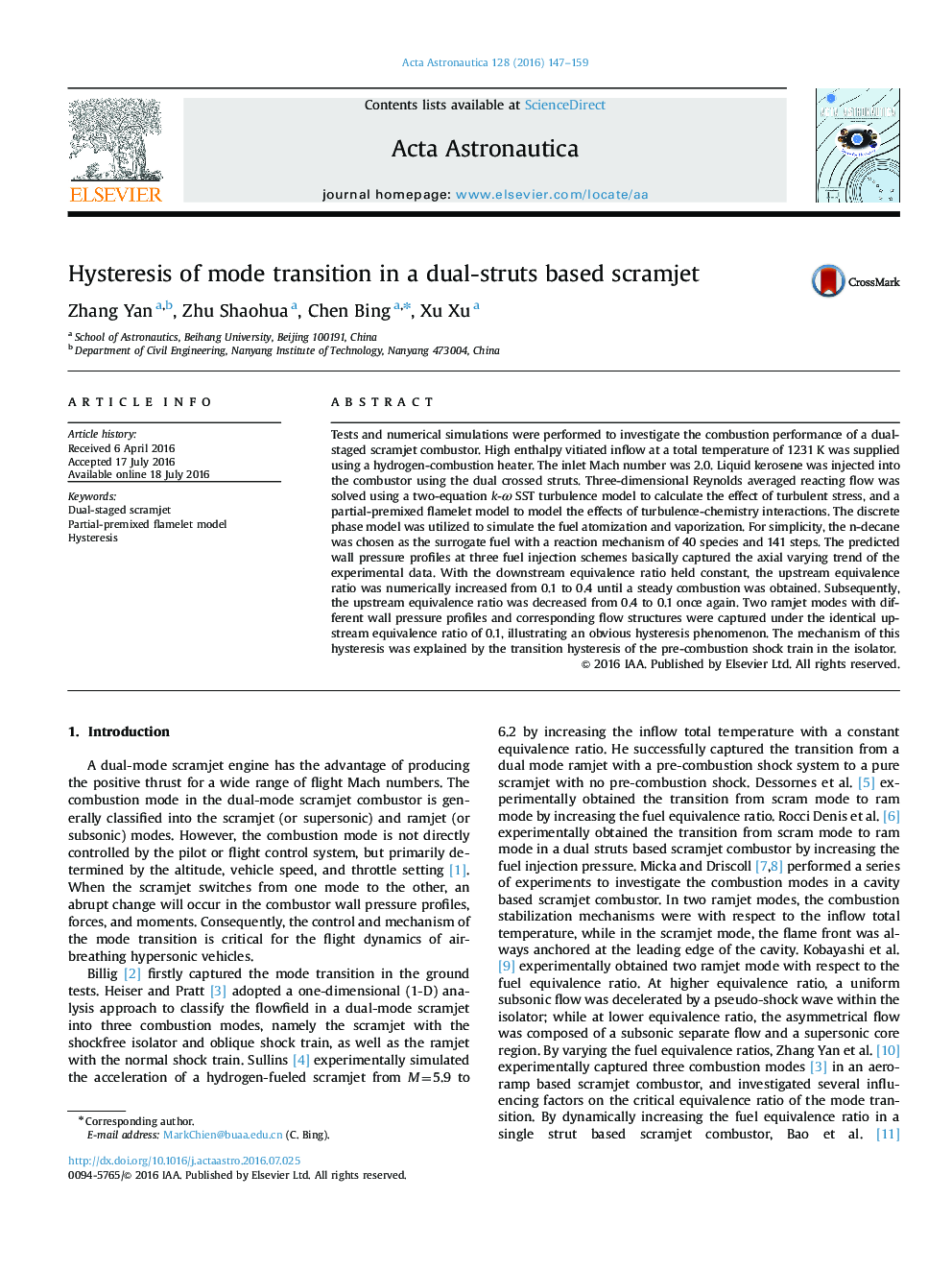| Article ID | Journal | Published Year | Pages | File Type |
|---|---|---|---|---|
| 1714136 | Acta Astronautica | 2016 | 13 Pages |
Abstract
Tests and numerical simulations were performed to investigate the combustion performance of a dual-staged scramjet combustor. High enthalpy vitiated inflow at a total temperature of 1231Â K was supplied using a hydrogen-combustion heater. The inlet Mach number was 2.0. Liquid kerosene was injected into the combustor using the dual crossed struts. Three-dimensional Reynolds averaged reacting flow was solved using a two-equation k-Ï SST turbulence model to calculate the effect of turbulent stress, and a partial-premixed flamelet model to model the effects of turbulence-chemistry interactions. The discrete phase model was utilized to simulate the fuel atomization and vaporization. For simplicity, the n-decane was chosen as the surrogate fuel with a reaction mechanism of 40 species and 141 steps. The predicted wall pressure profiles at three fuel injection schemes basically captured the axial varying trend of the experimental data. With the downstream equivalence ratio held constant, the upstream equivalence ratio was numerically increased from 0.1 to 0.4 until a steady combustion was obtained. Subsequently, the upstream equivalence ratio was decreased from 0.4 to 0.1 once again. Two ramjet modes with different wall pressure profiles and corresponding flow structures were captured under the identical upstream equivalence ratio of 0.1, illustrating an obvious hysteresis phenomenon. The mechanism of this hysteresis was explained by the transition hysteresis of the pre-combustion shock train in the isolator.
Keywords
Related Topics
Physical Sciences and Engineering
Engineering
Aerospace Engineering
Authors
Zhang Yan, Zhu Shaohua, Chen Bing, Xu Xu,
